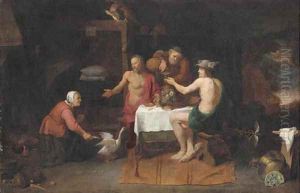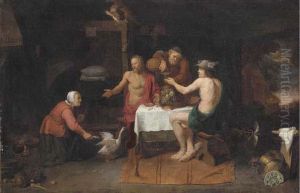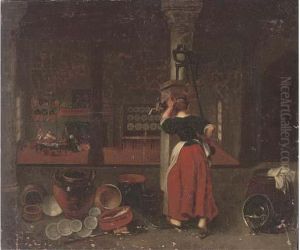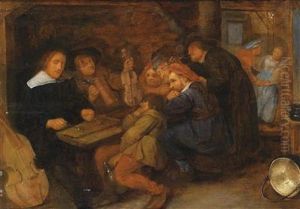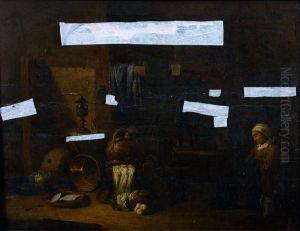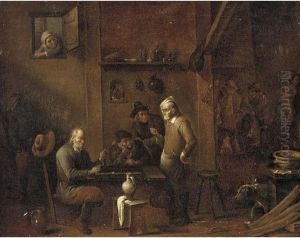David The Elder Ryckaert Paintings
David The Elder Ryckaert was a Flemish painter who was born on December 2, 1612, in Antwerp, in what is now Belgium. He belonged to a family of artists, with his father, David Ryckaert II, and his brothers all being painters. The Ryckaert family was well-established in the Antwerp art scene, and David the Elder was trained by his father. He became a master in the Guild of St. Luke in Antwerp in 1636, which was a typical step for artists of the time to gain recognition and the right to sell their work independently.
Ryckaert is known for his contributions to genre painting, which depicts scenes of everyday life. He was particularly adept at creating images of peasants and lower-class individuals, often imbued with a sense of humor and moral undertones. His work reflects the influence of other prominent Flemish artists like Adriaen Brouwer and David Teniers the Younger. Ryckaert's paintings often feature earthy tones and a skillful use of light and shadow, which lends a sense of depth and realism to his compositions.
Throughout his career, David the Elder Ryckaert showed a remarkable versatility. While he started with religious themes, he later shifted toward genre scenes and also produced a number of still lifes and landscapes. His scenes of alchemists in their workshops are particularly notable and reflect the contemporary fascination with science and alchemy during the 17th century. Ryckaert's work was well-received during his lifetime, and he enjoyed the patronage of prominent individuals, including members of the local aristocracy.
Ryckaert's paintings were often characterized by a warmth and an approachable, humanistic quality that made them popular among art collectors of his time. He had a prolific career and produced a significant body of work that was influential in the development of genre painting in Flanders.
David The Elder Ryckaert passed away on November 11, 1661, in Antwerp. His art continued to be appreciated after his death, and today his works can be found in various museums and collections around the world, providing insight into Flemish art and culture during the Baroque period.
